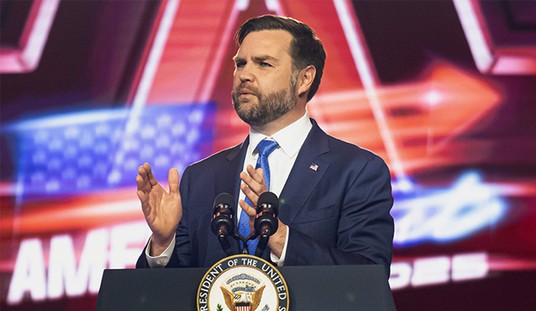WASHINGTON – With student loan debt exceeding $1.2 trillion, Democrats are pushing a proposal that would allow students to refinance their loans as part of their election-year agenda.
Brittany Jones, a 2011 college graduate, testified before the Senate Budget Committee this month on her own experience with student loan debt. While pursuing a degree in education, Jones racked up more than $70,000 in debt after graduating from Virginia Commonwealth University.
“Student loan debt has been the driving force of my decisions for the last eight years of my life,” Jones said.
After graduation, she chose to enter the workforce, finding a teaching position that paid $10 per hour. Her monthly student loan payments were $600. Combined with her rent and living expenses, she was unable to stay current with her payments.
“According to my current repayment plan, it is projected to be for the next 25 years of my life, well into the years for which I should be planning a retirement,” Jones said. “It should not be that way.”
Senate Budget Committee Chairman Patty Murray (D-Wash.) said Jones’ story resonated with her, recalling that Pell grants and student loans helped her get through college.
That, however, has become “considerably more difficult than when I graduated,” Murray said.
Murray said 16 percent of young households had student debt in 1989, according to the Pew Research Center. By 2010, that figure had more than doubled to 40 percent. A typical college graduate owes an average of $30,000.
Forty million Americans owe more than $1.2 trillion in student loan debt, making it the second leading source of debt in the nation.
“Crushing student debt isn’t just hurting borrowers,” she said. “There is mounting evidence that student debt is also holding back the economy.”
Rohit Chopra, the student loan ombudsman and assistant director with the Consumer Financial Protection Bureau, said excessive student loans threaten far-reaching sectors of the economy.
According to a survey by the National Association of Realtors, 49 percent of Americans cited student loan debt as an obstacle to home ownership. It has also been a main factor in explaining the relatively low levels of car purchases by young people, Chopra said.
He said higher debt burdens can hamper entrepreneurship and may also have a longer-term effect on future retirement security because it stops young workers from accumulating retirement assets.
Chopra also noted that refinancing opportunities at a lower interest rate are “few and far between” for student loan borrowers.
“When mortgage borrowers see broader interest rates plummet, their own incomes rise and their credit profiles improve, they try to refinance. Responsible student loan borrowers rarely have these options,” he said.
Sen. Elizabeth Warren (D-Mass.) has introduced legislation that would make student loan repayment easier by allowing them to refinance – both federal and private loans – at lower rates. Murray, who is a co-sponsor of the bill, said the Congressional Research Service estimates that the bill would let borrowers save $4,000 on average.
The bill would cost about $58 billion over 10 years, covered by a new tax on individuals earning high incomes.
Around 7 million student borrowers have defaulted on $100 billion worth of loans. Default rates on federal loans are more than triple those in the private market, according to the Wall Street Journal.
Richard Vedder, director of the Center for College Affordability and Productivity, said lowering borrowing costs would do nothing to address the main problem: rising tuition costs.
Vedder said federal student loan programs have caused college tuition to skyrocket beyond the pace of inflation. Federal money has led to “an academics arms race” financed in large part by rising tuition costs that pay for smaller class sizes, larger athletic subsidies, nicer amenities, and million-dollar salaries for university presidents.
He estimated that between 1939 and 1978, college tuition rose by an average of 1 percentage point above the inflation rate. In the nearly four decades since then – a period marked by the large increase of federal student loans – inflation-adjusted tuition growth has increased by well over 3 percent a year.
Had the pace of tuition increases remained at 1 percent a year, tuition levels today would be almost 60 percent lower, he said.
Vedder called Warren’s proposal a “bad idea” sending a “bad message” that would punish borrowers who meet their student debt obligations and reward those who default with lower interest rates.
“There are no painless solutions, but merely doing more of the same, lower interest rates, more loans, will worsen this situation and probably enhance, not reduce, income inequality in America,” Vedder said.
Sen. Ron Johnson (R-Wis.), the panel’s leading Republican, said “well-intentioned” federal student loan programs have enticed young Americans to incur a massive debt that the government is now trying to figure out how to handle.
“I think we have to honestly take a look at the reality of the situation and look at the very severe and serious negative, unintended consequences of our good intentions,” Johnson said.
President Obama announced during his weekly address to the nation on Sunday that he will use his executive authority to expand a provision that allows borrowers to cap their loan payments to 10 percent of income. He signed the executive order on Monday that could extend debt relief to an additional 5 million people. The president also lent his support to the Warren legislation, while criticizing congressional Republicans for opposing the bill.
“If you’re a big oil company, they’ll go to bat for you,” Obama said. “If you’re a student, good luck.”
Senate Democrats planned to bring the Warren proposal up for a vote on Wednesday, but Republicans blocked the procedural motion. The Bank on Students Emergency Loan Refinancing Act, which was unlikely to clear a full Senate vote, is part of the Democrats’ “Fair Shot” election-year agenda.
“The Senate Democrats’ bill really isn’t about students at all, its really all about Senate Democrats, because Senate Democrats don’t actually want a solution for their students, they want an issue to campaign on to save their own hides this November,” said Senate Minority Leader Mitch McConnell (R-Ky.).









Join the conversation as a VIP Member